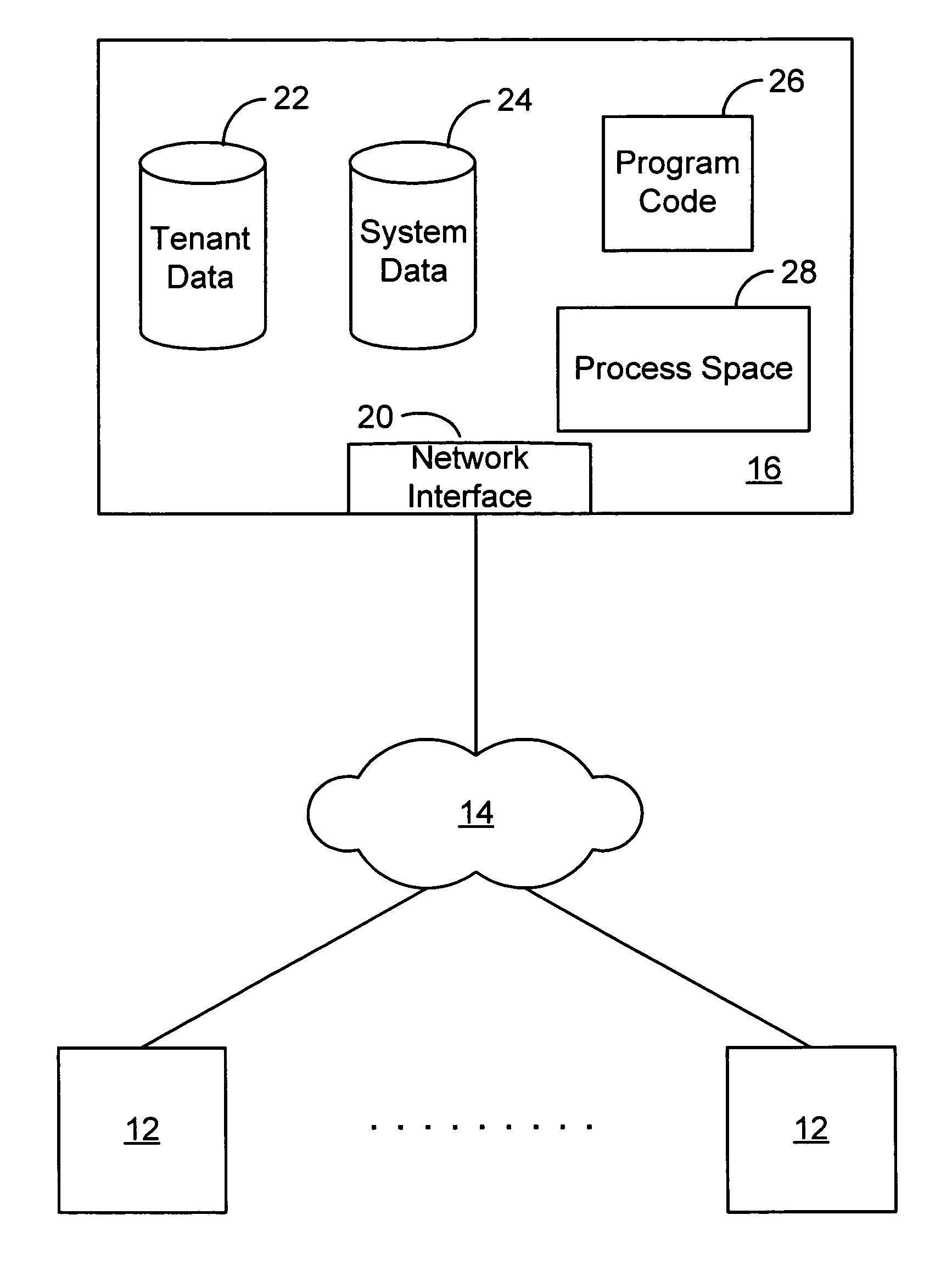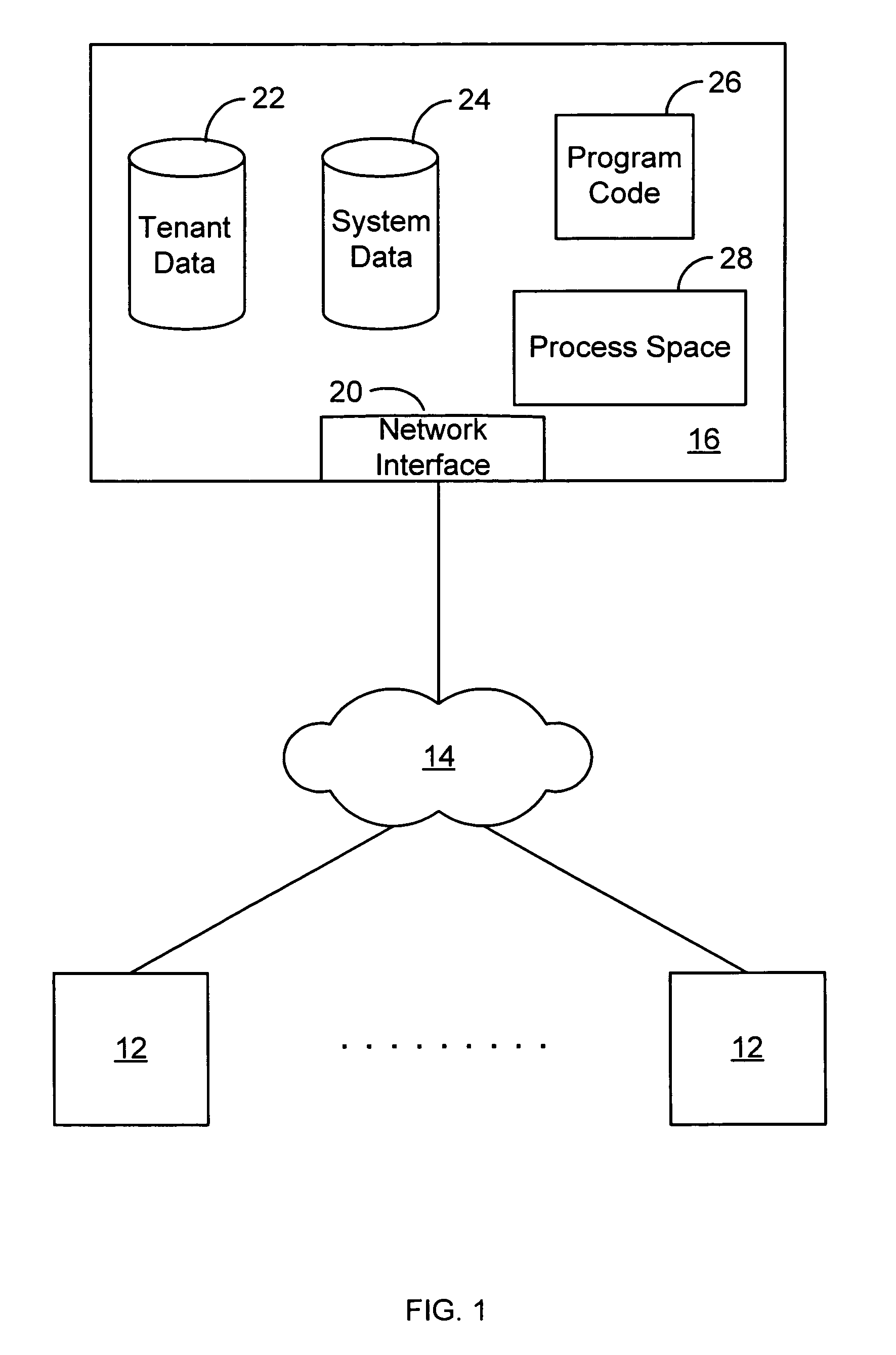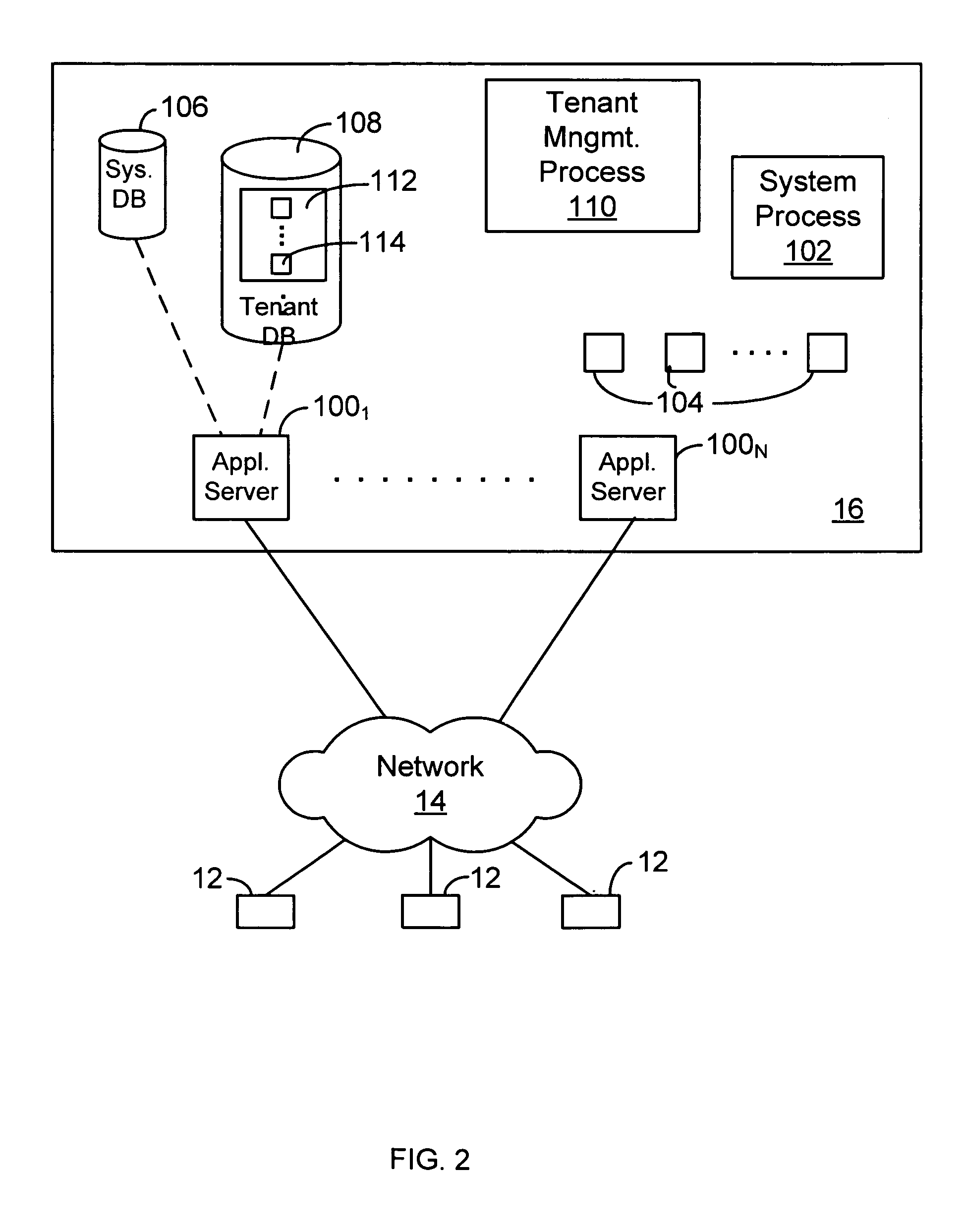Implementing formulas for custom fields in an on-demand database
a database and formula technology, applied in the field of database system formula implementation, can solve the problems of inefficiency and waste of computing resources, data stored in the database may become quite dispersed, and the implementation of formulas in a large database can require much more computing resources,
- Summary
- Abstract
- Description
- Claims
- Application Information
AI Technical Summary
Benefits of technology
Problems solved by technology
Method used
Image
Examples
Embodiment Construction
[0027]Embodiments in accordance with the present invention provide systems and methods for implementing formulas in a multi-tenant database network environment. Embodiments describe a family of techniques for implementing formulas that may occur, for example, in the application layer that sits in front of a conventional database. To ensure efficient use of resources, embodiments may reduce the consistency guarantees of data resulting from formulas and return formula field values that are out-of-date. This is particularly true for formulas that have input data from multiple rows, which is more likely to occur in a MTS.
[0028]Embodiments can provide an on-demand database that allows users to define a formula that specifies how to compute a new field from other fields. For example, a discount price formula field might be computed from a base price field and a discount percent field. In on-demand applications, the database is shared by many customers and efficiency becomes more important...
PUM
 Login to View More
Login to View More Abstract
Description
Claims
Application Information
 Login to View More
Login to View More - R&D
- Intellectual Property
- Life Sciences
- Materials
- Tech Scout
- Unparalleled Data Quality
- Higher Quality Content
- 60% Fewer Hallucinations
Browse by: Latest US Patents, China's latest patents, Technical Efficacy Thesaurus, Application Domain, Technology Topic, Popular Technical Reports.
© 2025 PatSnap. All rights reserved.Legal|Privacy policy|Modern Slavery Act Transparency Statement|Sitemap|About US| Contact US: help@patsnap.com



